Hearing something whistle, squeak or rattle in your car should cause you to literally prick up your ears. A trained ear could prevent dangerous situations, expensive repairs or breakdown of the car. In this article you read how to identify the most common driving sounds.
Systematically narrowing down
 In a moving car there is motion in all nooks and crannies. The engine is running, the gear shifting, the wheels are rolling over the road, the suspension is bouncing, the exhaust is swinging on the underbody blowing away the exhaust gases. Systematic action is required to identify these specific driving sounds. If possible, turn off as many systems as possible to track down the cause of the noise like a detective.
In a moving car there is motion in all nooks and crannies. The engine is running, the gear shifting, the wheels are rolling over the road, the suspension is bouncing, the exhaust is swinging on the underbody blowing away the exhaust gases. Systematic action is required to identify these specific driving sounds. If possible, turn off as many systems as possible to track down the cause of the noise like a detective.
 The most important condition for your search is therefore: driving unhindered. Ideally you find a spot where no other traffic participants are expected. In any case it has to be a paved road. Bumps and shocks on an off-road track might unnecessarily impair your search. Furthermore the car doesn’t sufficiently keep its momentum when driving through potholes.
The most important condition for your search is therefore: driving unhindered. Ideally you find a spot where no other traffic participants are expected. In any case it has to be a paved road. Bumps and shocks on an off-road track might unnecessarily impair your search. Furthermore the car doesn’t sufficiently keep its momentum when driving through potholes.
 If the noise occurs when driving, step on the clutch to disengage. If the noise persists, clutch and gear can be excluded from your search. Now accelerate again and – provided this is a long, straight road free of other traffic – switch off the engine whilst driving.
If the noise occurs when driving, step on the clutch to disengage. If the noise persists, clutch and gear can be excluded from your search. Now accelerate again and – provided this is a long, straight road free of other traffic – switch off the engine whilst driving.
Step on the clutch and disengage. The car now rolls by its own momentum. If the driving sounds are still audible, you can narrow down your search to the suspension.
 If the noise has disappeared, apply the brakes with the motor switched off. Please note: you might have to apply extra pressure because the brake assistance does not receive any pressure when the engine is switched off. In cars with power steering, the steering will be also considerably heavier without engine. The brakes might make themselves heard by grinding noises or a permanent squeak during driving.
If the noise has disappeared, apply the brakes with the motor switched off. Please note: you might have to apply extra pressure because the brake assistance does not receive any pressure when the engine is switched off. In cars with power steering, the steering will be also considerably heavier without engine. The brakes might make themselves heard by grinding noises or a permanent squeak during driving.
Stop the car. Let the engine idle and rev it up loudly several times. If an unusual noise can be heard when the engine is running idle, the malfunction can be narrowed down to the engine, drive, water pump or generator.

Brakes discounter
largest selection and brand quality
at low prices
|
Following this procedure allows you to come even closer to the cause of the noise
What may cause the driving noises?
A list with the most typical noises, their causes and how to act is given below in order to properly indertify driving sounds.
Sounds before driving off

- Squeaking and glugging sound when stepping into the car: Shock absorber defective; Replace.
We strongly recommend changing to Monroe shock absorbers.
|

- Soft buzz when turning the car key: normal operating sound of the fuel pump. Ignore.
|
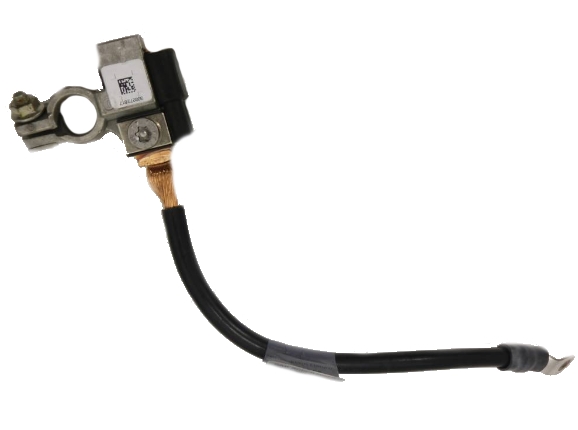
- Soft click when starting the car, possibly with simultaneous dimming of the dashboard lights: earth cable corroded. Remove, clean, if necessary replace and re-install.
|

- Grinding noise when starting the car: something is grinding in the belt drive. Switch off engine and check.
|
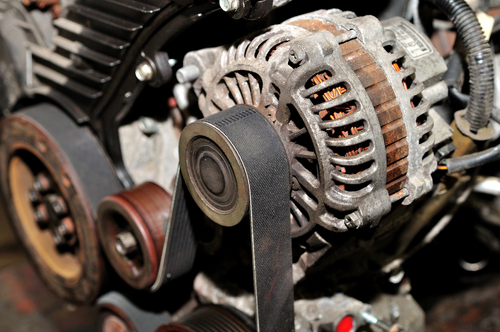
- Loud squeak from the engine: V-belt of generator or water pump worn. Simply replace.
|
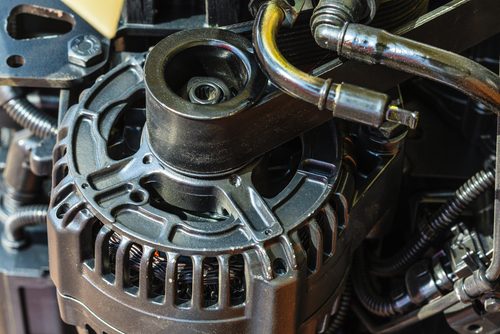
- Rattling noise not coming from the engine: generator bearings. Remove the generator and check, if necessary replace the bearings.
|
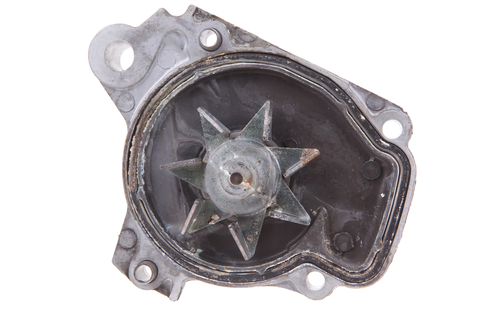
|
Driving sounds during the first few yards
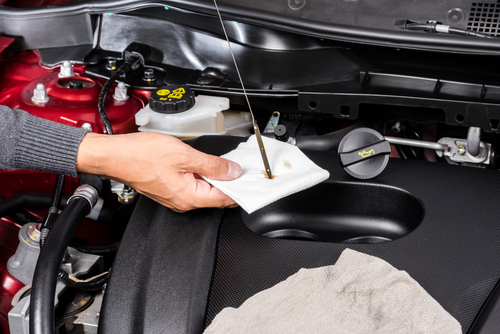
- Rattling noise when starting the engine: hydraulic valve tappet malfunction or lack of engine oil. Check oil level. If the noise stops after a few minutes, ignore it (provided the oil level is o.k.). If the noise persists, valve tappets are worn and should be replaced.

|

- Roaring noise when accelerating: exhaust is defective. Total or partial replacement.
|
Noises during driving
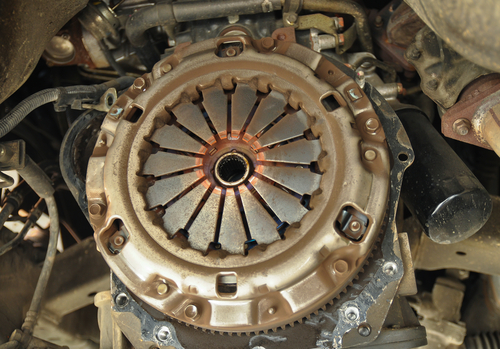
- Permanent rhythmic grinding noise: possibly the clutch. Step on the clutch. If the noise stops, the clutch is worn. Replace.
|

- Permanent soft squeak during driving: the brake calipers require lubrication. Disassemble brake pads and apply copper paste. (Please note: DON’T use machine grease or oil ON ANY ACCOUNT!!!)
|

- Soft whistling sound during driving: possibly the gearbox is running dry. As described check with engine running idle and look for oil leakage.
|

- Metallic grinding noise when braking: the brake linings are completely worn!! Ideally, you should stop the car and have it towed away. Otherwise: drive to the garage as soon as possible. Drive slowly and avoid braking.

|

- Knocking and rattling noise when steering: ball joint malfunction. Replace immediately: the car is no longer safe for traffic.
|

- Rattling sound when driving through potholes: tie rods, stabiliser bars or shock absorbers defective. Have them checked and replaced in a garage.
|

- Jerking knocking sounds during load change: engine mount rubbers are worn out. Replace.
|

- Humming noise when steering: wheel bearing is defective. Replace.
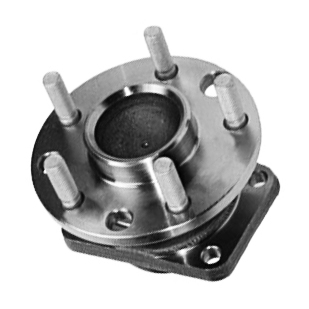
Wheel bearing | Fast shipping
available up from £ 5,33
|
|

- Indistinctive grinding and rattling during driving: car bumpers may have become loose. Check if all bodywork parts are in place.
|

- Hissing sound when engine is running: hairline fracture in the exhaust manifold. Part is up for replacement.
|

- Hissing sound when engine is switched off: overpressure in the cooling system. Wait until the pressure has come down. Then inspect the engine. Possible causes: radiator, thermostat or cylinder head gasket is defective, or hose is perforated.
|

- Screeching tyres in the curve: tyre pressure is too low. A tyre may be too old or too worn.
|

- Loud rolling sound of the tyres: tyres are too old and rubber is too hard. Possibly the tyre has been mounted the wrong way around (against the rolling direction). The arrow markings on the tyre should always point in the rolling direction.
|
Noises from the interior

- Screeching squeak: the interior blower fan wheel is running dry. Disassemble and grease. Please note: If the fan wheel is jammed, a cable fire in the fan motor could occur. Check for smoke development! Switch off fan and open all windows.
|

- Gnashing driving sounds when shifting gear: pedals or Bowden cables have run dry. Pedals can be greased. Bowden cables should be replaced. Please note: if this is ignored for too long, a Bowden cable could rupture! In this case water has penetrated the cable and the corrosion causes the Bowden cable to swell.
|

- Squeaking noises coming from the seats: the rails or seat mechanic is dry. The seat should be demounted and the parts greased.
|

- Rattling in the dashboard: a loose connection. Finding this might turn out to be a lot of work. Knock on different places on the dashboard with the engine running.
|

- Squeaking windshield wipers: wiper blades are worn. Replace by new and high-grade wiper blades.

|
Noises from the underbody

- Loud rattling during driving, especially in case of load change: exhaust rubber mount is loose. Check and replace. Alternative causes: loose covers or housings in the engine.
|

- Rattling and rolling sound during driving: the ceramic core of the catalytic converter is broken. These particular driving sounds initially get louder and then gradually less until they disappear completely. In that case the catalytic converter is empty and this will show up at the next car check.
|

- Clanking noise when the engine is running: heat shield of the catalytic converter is loose. This can often be repaired with one or two weld points.
|

- A roaring sound gradually becoming louder: the exhaust is leaking. If the exhaust is audibly roaring louder when revving up, the end silencer is probably defective. If the engine sound is becoming extremely loud, the exhaust flex pipe is often damaged. To make certain, the exhaust needs to be completely checked. Typically, soot smudges show at the leakage points. If the perforations are found in the centre of the silencer or in the connections, the exhaust can be covered with a simple sleeve as a temporary measure. Flexible pipes and end silencers should be ultimately replaced. These parts are generally rather cheap.
|
 Tip: find an experienced passenger!
Tip: find an experienced passenger!
 The problem of most operational noises in the car is their gradual occurrence. This makes you accustomed to suspicious driving sounds. Therefore it is always useful to have somebody else join you on a drive and ask him if he notices something special. This avoids “working blindness” and expensive damage due to defects occurring gradually.
The problem of most operational noises in the car is their gradual occurrence. This makes you accustomed to suspicious driving sounds. Therefore it is always useful to have somebody else join you on a drive and ask him if he notices something special. This avoids “working blindness” and expensive damage due to defects occurring gradually.
Especially older cars become “talkative” and tell you very reliably which parts are up for replacement. This enables an “old treasure” to remain fit for traffic when you have learned to mind the warning noises.
Foto: Alexandr Shevchenko, Brian A Jackson, ThomsonD, Baloncici, Simple Photo Shot, Daria Filimonova, love_studio, loraks, Voyagerix, sima, Gregory Gerber, Nor Gal, Lopolo, Pataporn Kuanui, NONGASIMO, Chatchai Kritsetsakul, Dewitt, InkHeart, similis, pdsci, khuruzero, Sharomka, Nykonchuk Oleksii, Kwangmoozaa, SARIN KUNTHONG, Corepics VOF, supergenijalac, korkeng, PREM WATTHANAKUL, Maxim Rumyantsev, Sergey Kelin, Andrey_Popov / shutterstock.com
 In a moving car there is motion in all nooks and crannies. The engine is running, the gear shifting, the wheels are rolling over the road, the suspension is bouncing, the exhaust is swinging on the underbody blowing away the exhaust gases. Systematic action is required to identify these specific driving sounds. If possible, turn off as many systems as possible to track down the cause of the noise like a detective.
In a moving car there is motion in all nooks and crannies. The engine is running, the gear shifting, the wheels are rolling over the road, the suspension is bouncing, the exhaust is swinging on the underbody blowing away the exhaust gases. Systematic action is required to identify these specific driving sounds. If possible, turn off as many systems as possible to track down the cause of the noise like a detective. The most important condition for your search is therefore: driving unhindered. Ideally you find a spot where no other traffic participants are expected. In any case it has to be a paved road. Bumps and shocks on an off-road track might unnecessarily impair your search. Furthermore the car doesn’t sufficiently keep its momentum when driving through potholes.
The most important condition for your search is therefore: driving unhindered. Ideally you find a spot where no other traffic participants are expected. In any case it has to be a paved road. Bumps and shocks on an off-road track might unnecessarily impair your search. Furthermore the car doesn’t sufficiently keep its momentum when driving through potholes. If the noise occurs when driving, step on the clutch to disengage. If the noise persists, clutch and gear can be excluded from your search. Now accelerate again and – provided this is a long, straight road free of other traffic – switch off the engine whilst driving.
If the noise occurs when driving, step on the clutch to disengage. If the noise persists, clutch and gear can be excluded from your search. Now accelerate again and – provided this is a long, straight road free of other traffic – switch off the engine whilst driving. If the noise has disappeared, apply the brakes with the motor switched off. Please note: you might have to apply extra pressure because the brake assistance does not receive any pressure when the engine is switched off. In cars with power steering, the steering will be also considerably heavier without engine. The brakes might make themselves heard by grinding noises or a permanent squeak during driving.
If the noise has disappeared, apply the brakes with the motor switched off. Please note: you might have to apply extra pressure because the brake assistance does not receive any pressure when the engine is switched off. In cars with power steering, the steering will be also considerably heavier without engine. The brakes might make themselves heard by grinding noises or a permanent squeak during driving.


























 Tip: find an experienced passenger!
Tip: find an experienced passenger! The problem of most operational noises in the car is their gradual occurrence. This makes you accustomed to suspicious driving sounds. Therefore it is always useful to have somebody else join you on a drive and ask him if he notices something special. This avoids “working blindness” and expensive damage due to defects occurring gradually.
The problem of most operational noises in the car is their gradual occurrence. This makes you accustomed to suspicious driving sounds. Therefore it is always useful to have somebody else join you on a drive and ask him if he notices something special. This avoids “working blindness” and expensive damage due to defects occurring gradually.
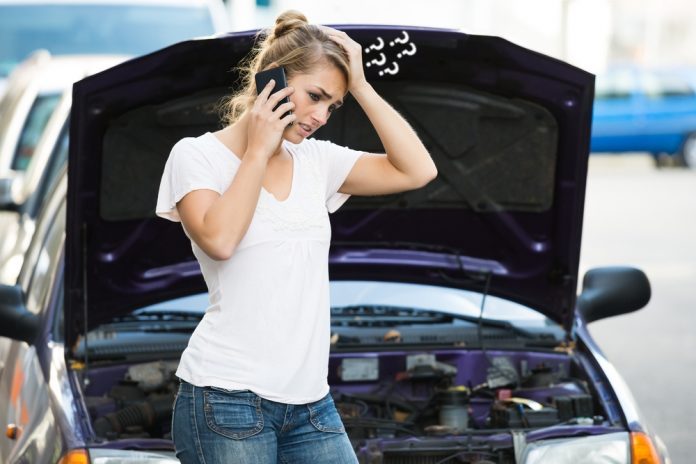











 (10 votes, average: 3.40 out of 5)
(10 votes, average: 3.40 out of 5)







